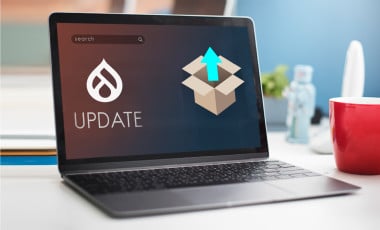How to Install Drupal 7 in your cpanel hosting account
This is a basic installation instruction for installing Drupal in your shared cpanel hosting account. Although the instructions are for installing Drupal 7 and for installing it specifically on your cpanel hosting account, the steps outlined (or something similar) should work for installing other versions of Drupal or installing it in other hosting accounts. Read the complete instructions before trying this out.
- Download Drupal - Download the latest copy of Drupal from http://drupal.org/project/drupal
- Create Database - Login to your cpanel account and create a database and a database user. You can do this using the MySQL Database Wizard in Cpanel. Give full permissions to the user on the newly created database. Copy the database username, password and the database name into a temp text file
- Upload Drupal to hosting site - Open the File Manager from cpanel and navigate to your home directory. Navigate to public_html and then click on the Upload button in the navigation bar. Select the tar archive that you had downloaded from drupal.org earlier and upload it to the public_html directory. Select the uploaded archive file in the filemanager and click on the extract icon on top to extract the files. This will create a folder Drupal-7 inside the public_html folder. Navigate to this folder and select all files and folders inside this folder using the select all icon on top. Now click on the 'Move file' icon which will open a popup asking you to list the directory to move the files to. Enter '/public_html/' there and submit. This should move all the files and folders from inside the extracted drupal folder right into the public_html folder which is going to be your webroot
- Prepare filesystem - In the File Manager navigate to /public_html/sites/default/ and copy default.settings.php into a new file settings.php. Also change the permissions of this file to 666. In addition set the permissions of /public_html/sites/default/ to 777. This will allow Drupal to create the files folder as owned by Apache user itself. Remember to set this back to 755 once installation is done.
- Install Drupal - Once the files are moved to the webroot you can install Drupal by accessing the domain corresponding to your hosting account from a browser. Drupal will automatically detect that it is not installed and will direct you through the installation. You will have to enter the database details you had saved earlier. You will also have to give some additional basic information like your site name, webmasters email id etc.
- Steps after installation of Drupal - Installing Drupal is probably the easiest part of setting up a Drupal website. Once installation is done you will want to install and configure additional modules, select and enable a good theme and of course add content to your site.
To see a much detailed explanation of the steps involved you can check out the standard Drupal installation guide available at - http://drupal.org/documentation/install. The instructions above assume that this is going to be a hosting account that is going to host a single Drupal installation at the webroot. If your site structure is different you will have to tweak these steps to get Drupal installed on your server. Additionally you have to be careful when working with the file manager as you can render the hosting account unusable if you edit or delete files outside of your public_html folder and you do not know what you are doing. So be careful, we will not be liable for what you do with your hosting account :-). If you need help in installing or configuring Drupal in your hosting account / site do contact us and we will be happy to get this done for you.



